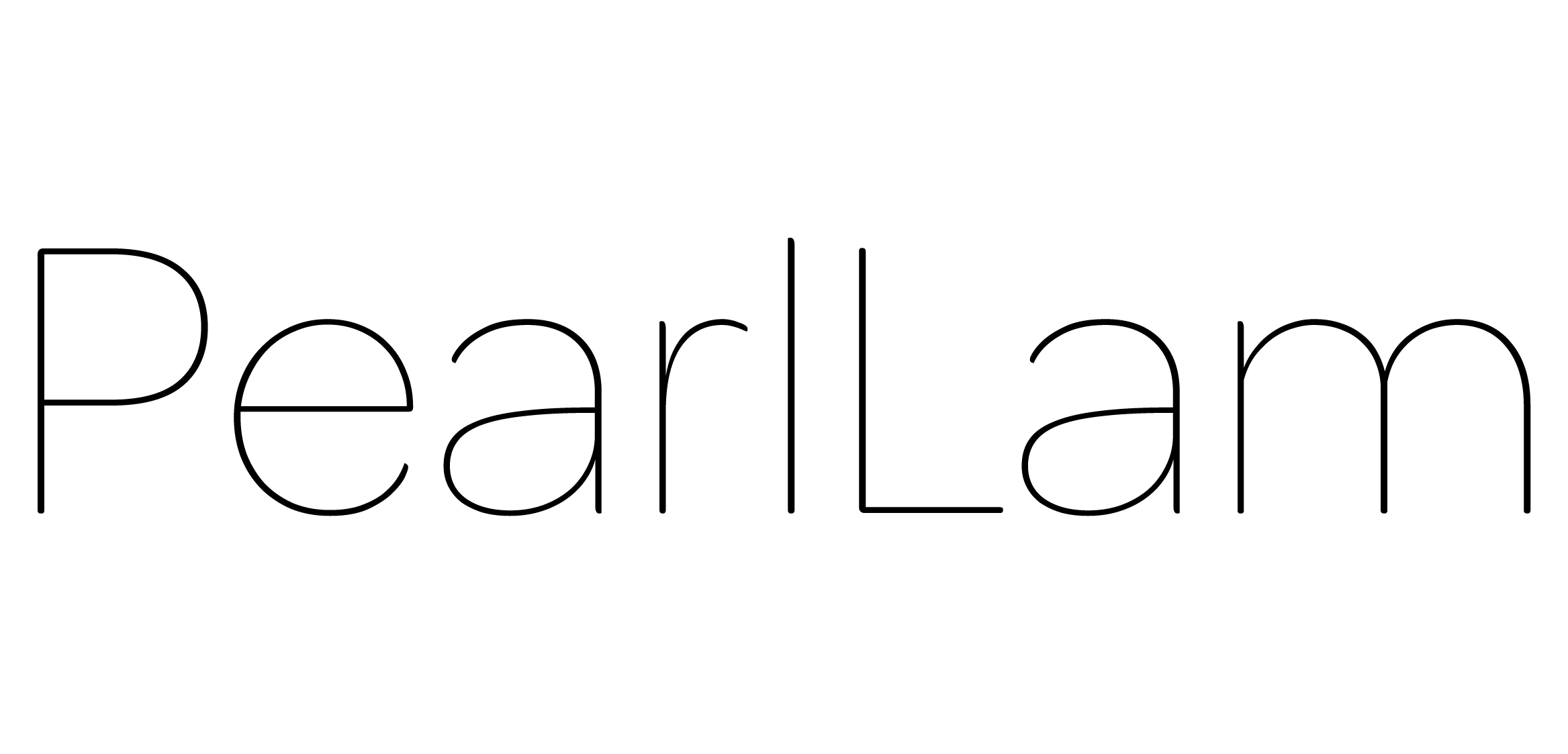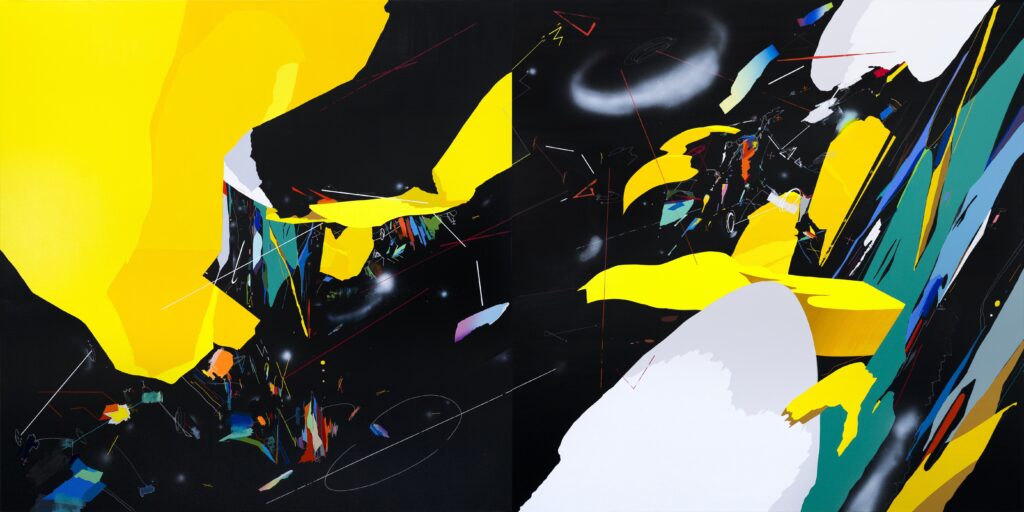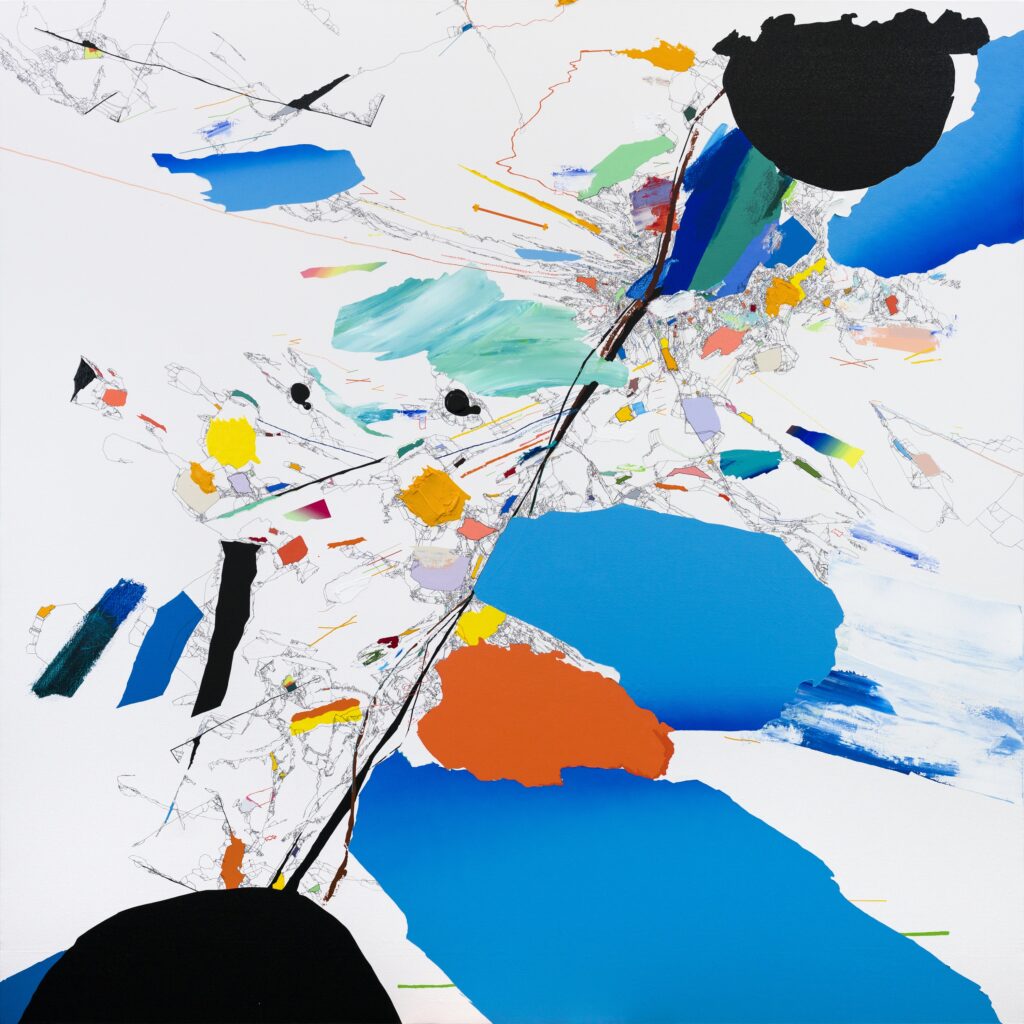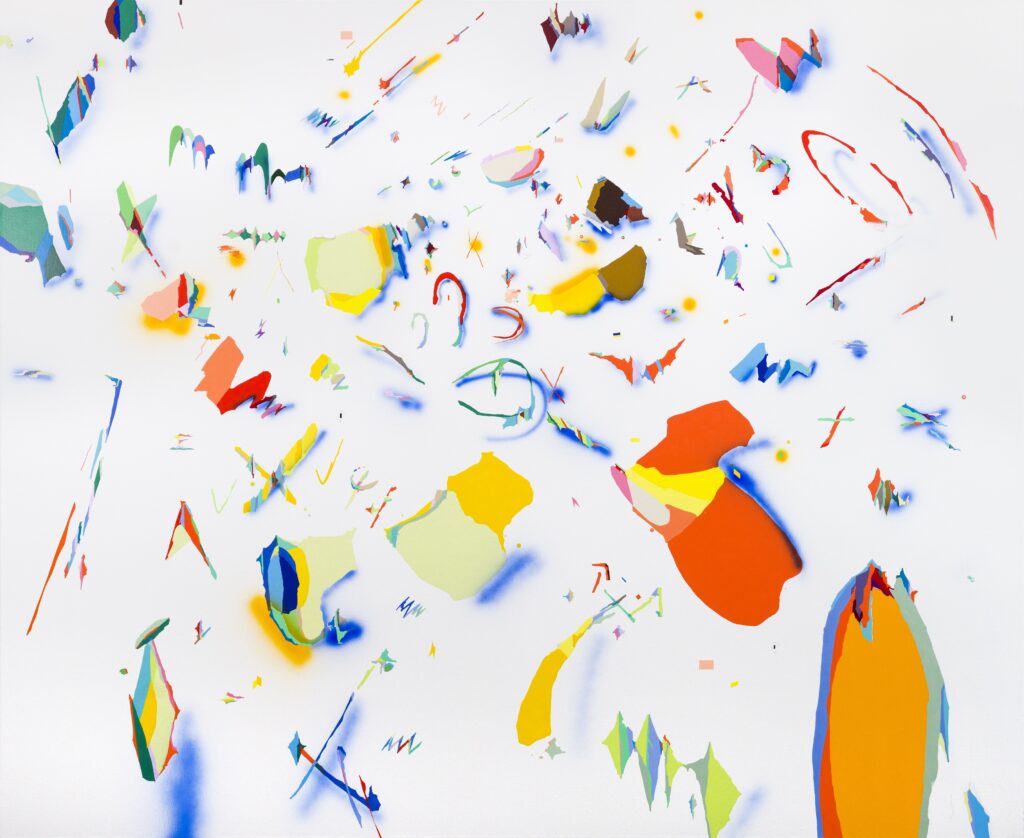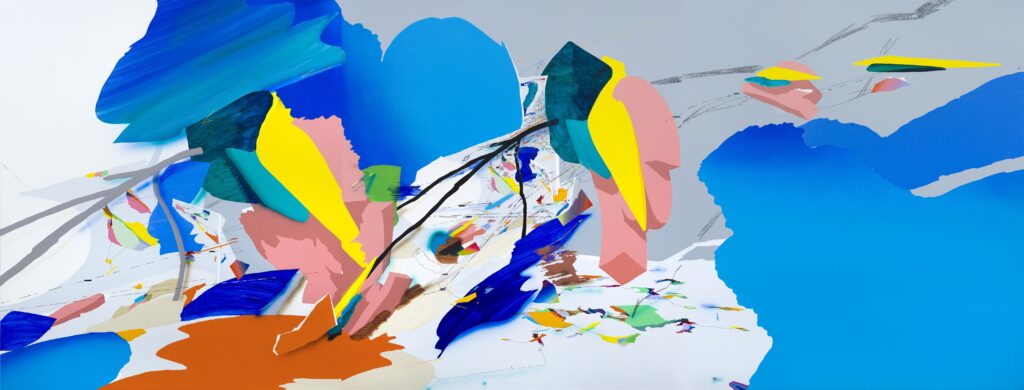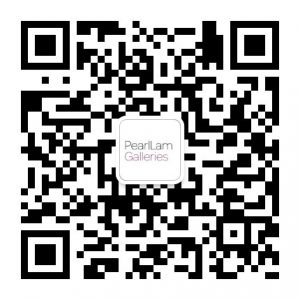7 September– 18 November, 2024
ZHU PEIHONG: Evolution of Space
Shanghai
Overview
Shanghai—Pearl Lam Galleries is delighted to announce the upcoming exhibition, Evolution of Space, marking Zhu Peihong’s first solo exhibition at the gallery. This exhibition employs a case study approach to explore Zhu’s latest artistic innovations, including his easel paintings, sculptures, and new media moving image works. In the interaction between materials and ideas, the ongoing practices integrated by the artist allow the work itself to generate complex spatial forms in a disciplined and spontaneous manner as it evolves through diffusion and response. As the artist says, “In the convergence of the virtual and the real, I perceive and capture the flow of consciousness, exploring the infinite boundaries of space and consciousness.”
Zhu Peihong’s paintings, while appearing abstract in form, differ from Western abstract painting. Zhu’s painting seeks to restore and reveal the ways in which sensory consciousness exists in the virtual and real worlds. The exhibited series My Space, Growing, Material, and Void Perception are created with acrylic paint and supplemented by ink fine liners, acrylic pens, and oil paint on canvas.
The My Space and Growing series transform the artist’s memories and conscious perceptions into a unique abstract painterly language. The former focuses on the process of inward observation and introspection, emphasising the inherent logic of colour blocks and hues on the canvas. The latter explores the dynamic dialogue between the artist’s inner space and the external world, translating this interaction into a visual painting language characterised by distinct network-like linear structures and layers of stacked colour blocks. The Material and Void Perception series are the artist’s investigation of three-dimensional space using new media technology and incorporate continual gestures in the process of interaction with perception. In the Material series, the artist pours black acrylic paint onto the canvas, allowing it to drip down with gravity. This creates a mutual pulling force with the other colours on the canvas until a delicate sense of balance is reached. In the Space Perception series, the artist imports real-life artworks into a virtual space through data. This process causes two-dimensional paintings to develop a three-dimensional volume. When these digital versions are brought back to the canvas, the three-dimensional form is absorbed back into the two-dimensional plane.
The use of virtual reality technology further transforms the artist’s body into a medium for perceiving the external world, thus breaking down the barriers between easel painting, sculpture, and installation works. The exhibited work Space and Time of Consciousnessincorporates virtual reality in its creation method, blending the features of painting and sculpture. In the virtual space, the artist’s body is transparent, and the paintbrush in his hand becomes a virtual reality controller, where every movement is recorded and translated into visual images of three-dimensional data. The artist focuses intently on each gesture, and each resulting brushstroke creates a volume. This work merges painting and sculpture through virtual reality technique, exploring the possibilities of recording and translating consciousness in virtual space.
The Mix Space and Harbor of Consciousness series in this exhibition were created by the interdisciplinary Zhu Peihong Art Studio, founded by the artist and architect Zhao Yilin. Zhu takes charge of the form and colour designs, while Zhao Yilin manages the structure and production. This interdisciplinary collaboration transforms traditional painting into experimental and interactive spatial works using virtual reality and architectural design.
Since 2020, Zhu has been exploring canvas painting and procedurally generated art. This allows his creations to transition from reality into a virtual realm, breaking free from the constraints of the physical world, such as the boundaries of three-dimensional space and the pull of gravity. The new media work Mix Space can be seen as the artist’s theatre of consciousness, where all data operations are controlled by three-dimensional programmed software. The work creates a blended field of virtual and real, where the exchange of consciousness becomes an everyday occurrence. As consciousness departs from our bodies, it evokes a sensory experience akin to daydreaming.
Inspired by bold imaginings of future architectural functions, Harbor of Consciousness explores the potential for interaction between architecture and consciousness. In everyday life, architecture primarily serves as functional spaces for physical use; however, the artist not only views the work as a physical space, but also as an interface for consciousness. It needs to store and process vast amounts of data about memory and perception with high-speed reading and transmission capabilities; it also requires strong arithmetic power to synthesise new forms of consciousness. In the overall architectural design, large fan-shaped areas are designated for high-capacity consciousness storage, while in the circular passageways, multiple lines are interconnected to increase the speed of computing power for the rapid transmission of consciousness.
